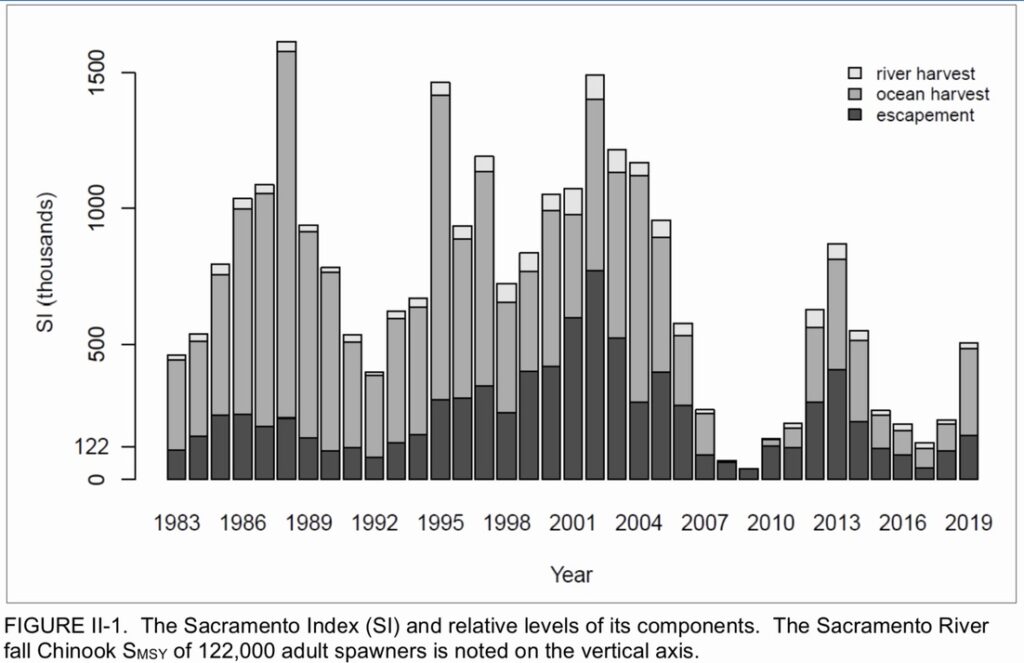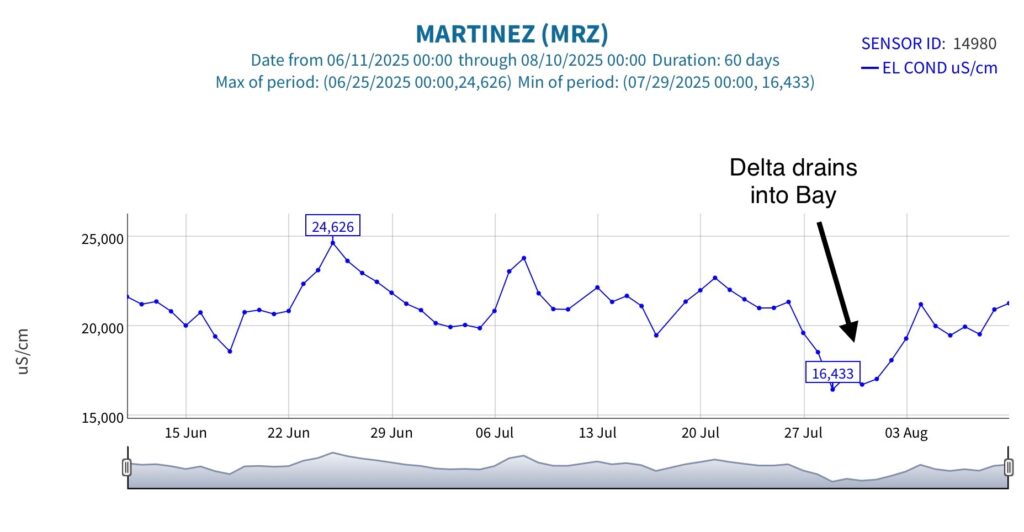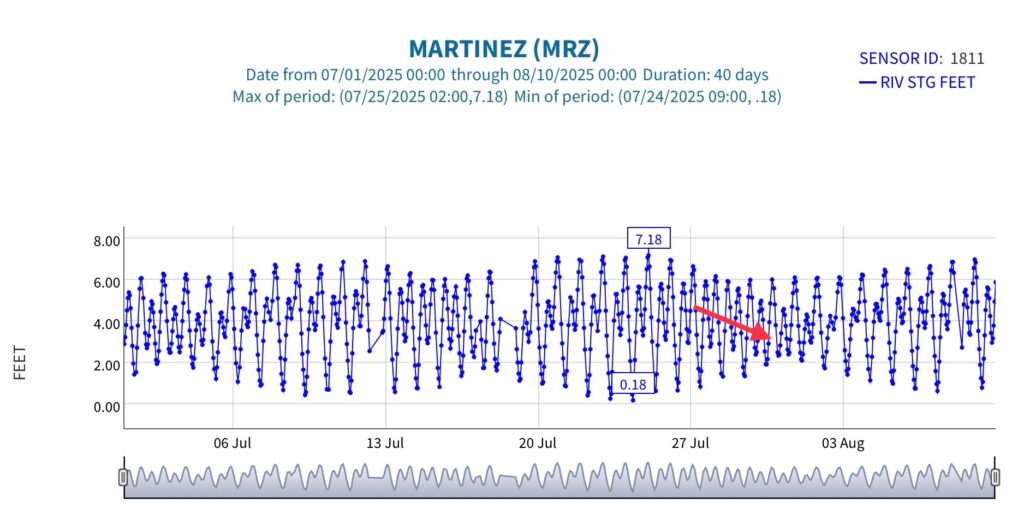A December 3, 2025 article in the LA Times warns of the federal government’s plan to take more water from the Delta. This is not something new – they have maximized exports much of this year and last year (Figure 1). The State of California has also been doing this, but to a lesser extent (Figure 2). Together, the two projects can export up to 22,000 acre-ft per day (8,000 acre-ft/day at Tracy, 14,000 acre-ft/day at Banks). In a wet (2023) or above-normal year (2024 and 2025) exports can exceed 6-million acre-feet out of a potential maximum export pumping capacity of 8 million acre-feet.
The projects were able to exceed expectations in above-normal water year 2025 by eliminating the Fall-X2 Action that over the past decade required higher Delta outflows and lower exports in the September-October period to protect Delta smelt in the Bay-Delta. In September 2025, the projects were able to export 674,000 acre-feet by dropping the Fall-X2 Action, compared to 536,000 acre-feet in September 2024 when the Fall-X2 Action was implemented.
The increased September exports in 2025 had significant environment effects that impacted salmon, smelt, and other Bay-Delta native fishes.
- First, Delta outflow to the Bay was reduced in half (about 300,000 acre-feet, Figure 3) through a combination of the higher exports and lower reservoir releases (Delta inflow, Figure 4). That led to higher temperatures of water entering the Bay and the low salinity zone (LSZ) moving upstream from the Bay into the west Delta channel near Rio Vista (Figures 5 and 6). These effects are detrimental to salmon at the peak of their fall migration into the Bay from the ocean and to the low salinity zone, which is designated critical habitat for smelt.
- Second, lower Delta inflow from the Sacramento River (Figure 4) led to higher water temperatures in the north Delta at Rio Vista (Figure 6) and Freeport (Figure 7).
- Third, reduced flows in the lower Sacramento River (Wilkins Slough, Figure 8) led to higher water temperatures (Figure 9), detrimental to salmon during their spawning migration to the upper Sacramento River and its tributaries.
In drier years (below-normal, dry, and critical), there are no Fall-X2 Actions, but there are many other restrictions on river flows, exports, and reservoir storage use to protect fish and their habitat as well as future water supplies. In the past, Delta exports in drier years have been limited to only 3 to 5 million acre-feet per year. We have yet to see the federal government’s plan to export more water in such years. We can only guess as to what drastic changes to expect and the environmental damage that could ensue with the new federal export plan. Higher spring exports in 2025 (see Figure 1) is one such change.

Figure 1. Federal exports from the south Delta via the Tracy Pumping Plant (TRP) in 2024 and 2025

Figure 2. State exports from the south Delta via the Harvey Banks Pumping Plant (HRO) in 2024 and 2025.

Figure 3. Delta Outflow to the Bay in Aug-Sept period of 2024 and 2025. The Fall-X2 Action was not implemented in September 2025.

Figure 4. Streamflow in the north Delta at the Freeport gage May-Dec 2024 and 2025. The Fall-X2 Action was implemented in September 2024 but not in September 2025 nor in October 2024 or 2025.

Figure 5. Salinity and water temperature in the west Delta near Rio Vista from August 2023 through September 2025 with emphasis on Sep-Oct period. Red lines denote water temperature (20C) above which there is significant stress on migrating adult fall-run salmon. The Fall-X2 Action was not implemented in October 2024 or September 2025.

Figure 6. Water temperature in the Sacramento River channel at the Rio Vista Bridge gage Aug-Sep 2024 and 2025. The Fall-X2 Action was not implemented in September 2025.

Figure 7. Water temperature in the Sacramento River channel at the Freeport gage in September 2024 and 2025. The Fall-X2 Action was not implemented in September 2025.

Figure 8. Streamflow in the lower Sacramento River at the Wilkins Slough gage in September of 2024 and 2025. The Fall-X2 Action was not implemented in September 2025.

Figure 9. Water temperature in the lower Sacramento River at the Wilkins Slough gage in September of 2024 and 2025. The Fall-X2 Action was not implemented in September 2025.



















